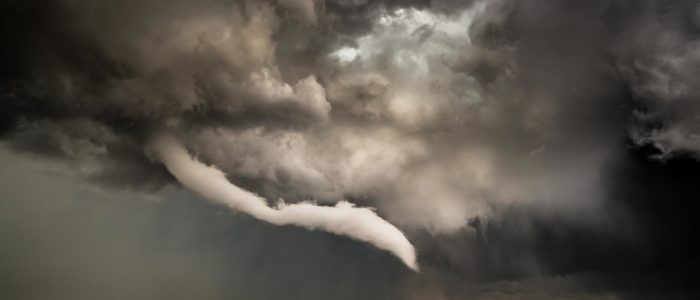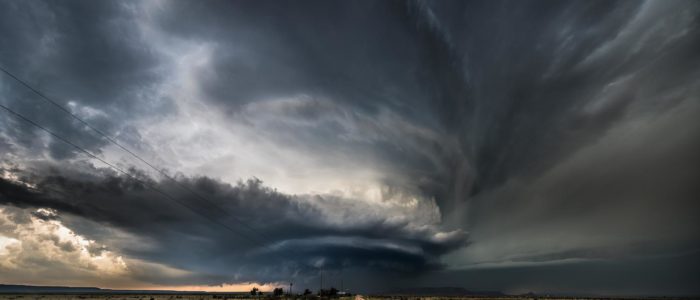StormChasing
Storm Chasing for me is about seeing nature at its most beautiful. Each storm is unique, providing new and diverse photo opportunities. The goal of a chase for me is therefore to be witness to spectacular skies and not necessarily to see a tornado, otherwise I would frequently be disappointed. Generally a tornado is short lived and provides few chances of taking great images. Quite frequently a tornado can be rain wrapped or be shrouded in darkness, so it is not that often that you will see a photogenic funnel.Forecasting is a prerequisite for storm chasing. It is not just a matter of heading out and hoping for the best, an understanding of the environment is required. This helps in selecting a target area and knowing when to leave one storm for another, or when to simply stay at home! Technology has greatly helped when out in the field – mobile broadband, software and GPS locates me relative to the storms and helping keep me safe. Do not attempt storm chasing unless you know what you are doing or are with someone experienced, high tech equipment alone is not enough to be a chaser.
Believe it or not but being struck by a tornado while chasing is low on the list of concerns while on the road. Other threats are more prominent including other drivers, debris on the road including downed power lines, hydroplaning on wet roads, lightning and large hail. The concern with other drivers is many. There are “yahoo” chasers who drive with no respect for others and will often park by the roadside without sufficiently pulling off the road. They put there life at risk to get to see a tornado and in doing so put others at risk. There are those who will slow down driving in heavy rains, and rightly so but may hinder others on the road. In many situations vehicles will pull over on the hard shoulder when visibility is low and can pose as a hazard if not passed with care. I remember chasing a storm in Texas on a 2 lane highway in rain and suddenly coming to a blocked underpass – cars had parked underneath the bridge to avoid hail damage, parking from the hard shoulder across to the other side!! With low visibility it would be easy to imagine a truck plowing through them at 70mph! Also note that underpasses are one of the worst places to shelter from tornadoes since winds can be accelerated under them. If caught out find a low lying ditch away from your vehicle, the theory being that the majority of debris should pass over you.
Not every chase is a success. A capped environment (warm air aloft) can inhibit storm initiation, even in juicy and unstable conditions resulting in nothing but blue sky. Many miles and a number of busts are the norm. The thrill ride seen on so many dramatized storm shows is misleading, obviously they are going to cut out all of the boring parts! And then there is the devastation the storms can leave behind when hitting homes. Seeing such situations can be very emotional, especially where life is lost. The majority of the time emergency services are quick to respond, and sometimes are already in position watching passing storms in anticipation of any evetn that may unfold. Although some people on the plains see the arrival of storm chasers as a negative, or a bad omen per say, my perception is the opposite. It is not storm chasers that bring storms with them. What we do is report any potential danger so that warnings are put out, sirens turned on and hopeful lives are saved as a result.
Website

